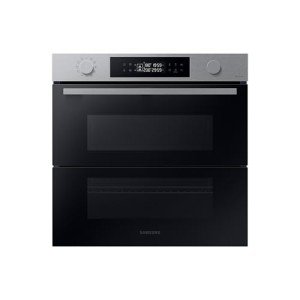The Rise of Built-In Ovens: A Seamless Approach to Modern Cooking
In modern kitchens, where style looks mix flawlessly with functionality, one device sticks out as a true game changer: the built-in oven. As homeowners and chefs alike continue to seek ingenious solutions that boost their cooking experience, built-in ovens have ended up being significantly popular. This short article explores the advantages, factors to consider, and trends surrounding built-in ovens, highlighting why they are a necessary function in modern-day cooking areas.
What is a Built-In Oven?
A built-in oven is a cooking area device designed to be integrated into the cabinets of a kitchen rather than standing alone. Unlike standard freestanding ovens, which can be moved and positioned anywhere, built-in ovens come in numerous designs and sizes to fit specifically within designated spaces. Available in single or double setups, these ovens provide a streamlined look that complements contemporary kitchen area designs.
Benefits of Built-In Ovens
1. Space-Saving Design
Among the most enticing advantages of built-in ovens is their space-saving style. By integrating the oven into cabinetry, you can release up valuable counter and flooring area. This is particularly beneficial in smaller sized kitchens, where maximizing room is necessary. Built-in ovens can be set up at eye level, making them more accessible and lowering the requirement to flex down.
2. Visual Appeal
Built-in ovens contribute to a sleek and cohesive kitchen style. Offered in numerous finishes-- such as stainless-steel, black, white, and custom-made kitchen cabinetry-- they can mix flawlessly into the general decoration. This aesthetic appeal enhances the kitchen area's visual consistency and raises the area, developing a modern and advanced environment.
3. Boosted Functionality
Numerous built-in ovens come equipped with advanced cooking innovations, such as convection cooking, steam ovens, and wise features. These enhancements enable flexible cooking options, making it simpler to accomplish professional-level outcomes at home. Smart built-in ovens can even connect to Wi-Fi, making it possible for users to manage the oven remotely, receive notifications, and gain access to a range of cooking programs and recipes.
4. Improved Ventilation
Since built-in ovens can be integrated with kitchen area hoods and ventilation systems, they can help keep much better air quality and minimize cooking odors. This is especially substantial for those who love to prepare with aromatic spices and active ingredients, as an efficient ventilation system can keep the kitchen comfy and welcoming.
5. Personalization Options
Built-in ovens offer a large range of modification choices to suit individual cooking styles and needs. From professional-grade devices with several cooking modes to compact designs for smaller sized kitchen areas, homeowners can pick the oven that fits their particular requirements. Lots of producers also use customizable front panels, allowing you to match the oven's appearance to your cabinets for a truly unified look.
Considerations When Choosing a Built-In Oven
While built-in ovens have lots of advantages, there are crucial factors to consider to remember before buying:
1. Cost
Built-in ovens normally include a higher price tag than their freestanding equivalents due to their style and setup requirements. It's important to element in both the cost of the oven and any extra costs associated with cabinets modifications or setup.
2. intergrated ovens
Installing a built-in oven often requires expert assistance, specifically if you require to modify existing kitchen cabinetry. Ensure that you consider any expenses related to installation, consisting of labor and prospective cabinetry changes.
3. Size and Dimensions
Before buying a built-in oven, determine the designated space properly to ensure a correct fit. Built-in ovens been available in different sizes and configurations, so picking one that aligns with your requirements and kitchen design is crucial.
4. Way of life and Usage
Consider your cooking routines and needs when choosing a built-in oven. If you frequently host large events, a double oven might be more useful. On the other hand, if you have a compact cooking area, a single-wall oven might suffice.
Trends in Built-In Ovens
The kitchen area home appliance market is continually developing, and built-in ovens are not exempt from emerging patterns. Some current trends include:
Smart Technology Integration: With the increase of wise home technology, built-in ovens now typically feature connection options. This permits users to monitor cooking progress and adjust settings via mobile apps.
Energy Efficiency: As sustainability ends up being a top priority, many producers are purchasing energy-efficient built-in ovens that minimize energy consumption while maintaining performance.
Multi-functional Designs: Built-in ovens now provide functions such as air frying, slow cooking, and steaming, providing adaptability that fulfills a wide variety of cooking methods.

Conclusion
Built-in ovens undoubtedly represent a perfect blend of design, function, and convenience in today's cooking areas. As more homeowners go with this modern-day solution, the focus shifts to developing a cooking area that is as visually pleasing as it is practical. Whether you are building a brand-new home or renovating your cooking area, considering a built-in oven could elevate your culinary experience and change your kitchen into a trendy and functional haven. With a variety of options readily available and continuous innovations in innovation, built-in ovens stay a standout option for both amateur cooks and culinary enthusiasts alike.
